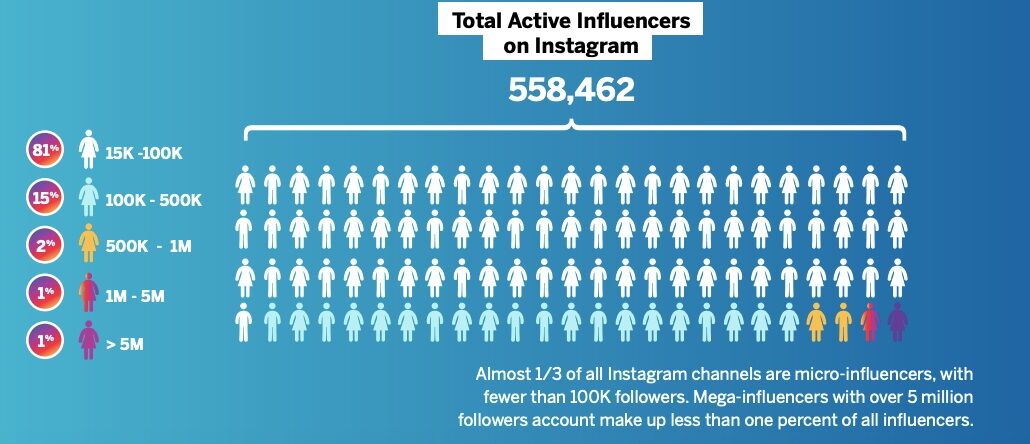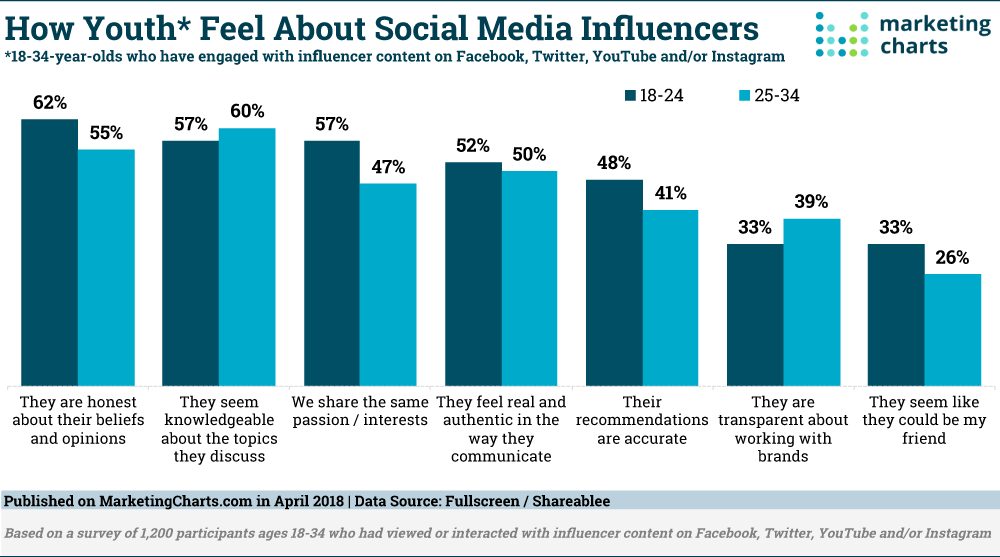Influencer marketing is growing into a very profitable industry. How will it change and how can marketers keep up with the latest trends?
Influencers are everywhere on social media. Influencer marketing is becoming a full-time profession for many Internet stars, while celebrities are also finding additional income.
What does the rise of influencer marketing mean for marketers? How can they adjust their strategies to benefit from influencer marketing?
We’re looking at four key areas of influencer marketing:
- Picking the right influencer and channel
- Building trust
- Focusing on authenticity
- Measuring ROI
These four areas will affect our 2019 strategies and here are some important stats to consider.
Key stats about influencer marketing to know for 2019
1. Influencer marketing will become a $10 billion industry by 2020
Influencer marketing is a growing industry and more marketers seem ready to invest in it. It is estimated that the industry will reach $10 billion by 2020, which means that the competition will be higher among marketers trying to seal partnerships with influential celebrities.
Luckily, not all influencers have a well-established reputation and there’s still an opportunity to reach micro or nano influencers to make the most of your budget.
2. 94% of marketers think that ‘transparency and authenticity are key to influencer marketing success’
It’s becoming harder to tell whether an influencer is genuinely influential. The rise of fake followers and bots is bringing out the need to focus more on transparency and authenticity.
Instagram is already working on deleting fake followers, while FTC guidelines require more transparent collaborations between influencers and brands.
This is also important for Internet users who see sponsored messages with a clear labeling to avoid any misinterpretation of it.
3. 39% of active Instagram accounts with over 15k followers are influencers

Still wondering what the state of influencer marketing is? According to Influencer DB, there are more than 558k influencers on Instagram who have more than 15k followers.
What’s also interesting from the same report is that 81% of all influencers are micro-influencers with 15k to 100k followers.
Influencers with over 5 million followers make 1% of all influencers and they’re probably more appropriate for larger brands.
Micro-influencers can be more approachable and sometimes more relevant to your brand and your message. All you need is to research their interests and how appropriate they are for your target audience.
4. 42% of marketers find the question of fake followers and bots as their main concern in influencer marketing
Authenticity and transparency are really important and marketers are concerned about the rise of fake followers.
Bots make it harder to find the best influencers but social platforms seem to be working towards reducing the number of existing bots.
The best way to test an influencer’s impact is to monitor the engagement. Followers don’t indicate the influence of someone anymore so make sure you spend the right time on researching an influencer before working with them.
5. 22% of 18-34 year-olds made a large purchase after seeing an online influencer endorsing the item

People are mostly influenced by their friends and personal acquaintances, but influencers can still affect their decisions.
Younger adults have more chances to be influenced by online influencers. In fact, 22% of them said they’ve made a large purchase after seeing an online endorsement by an influencer. Thus, if you’re interested in reaching younger demographics, influencers can help you boost your sales, provided that you bring on the most relevant influencer for your followers.
6. 84% of marketers think that the measurement of ROI will be critical to the future success of influencer marketing
The measurement of the ROI of influencer marketing is one of the biggest challenges for marketers. We are heading to a stage in influencer marketing though that it’s important to analyse the success of your collaborations with influencers.
That’s why 84% of marketers think that the best influencer marketing strategies will be able to measure their ROI. The future of influencer marketing depends on our ability to prove its success to justify the time and the budget that we’re spending on it.
7. Marketers state that engagement is the most common metric to their success of influencer marketing
When it comes to measuring the ROI, marketers have different metrics to focus on.
According to Linqia’s report, engagement seems to be the most popular metric (90%), with clicks (59%), impressions (55%), conversions (54%), and reach (50%) following.
Engagement seems to be a really popular choice for brands when working with influencers to improve their interaction with their audience. It’s an easy way to measure the success of a partnership, especially in the early stages of an influencer marketing strategy.
However, the interest in clicks, impressions, and conversions also shows that more marketers are raising their expectations on influencer marketing seeking further ROI from each partnership.
What can we learn from these stats?
Influencer marketing is changing. We’re moving away from the early stages and we’re all ready to improve our strategies.
It’s encouraging to see that more marketers are concerned about trust and authenticity, while we’re also seeking for the ROI of every partnership with an influencer.
Moreover, people seek for transparency when interacting with influencers, which makes trust more important than ever.
Engagement is key but it can only be achieved through mutual understanding on sealing successful partnerships.
Ready to boost your influencer marketing strategy?

